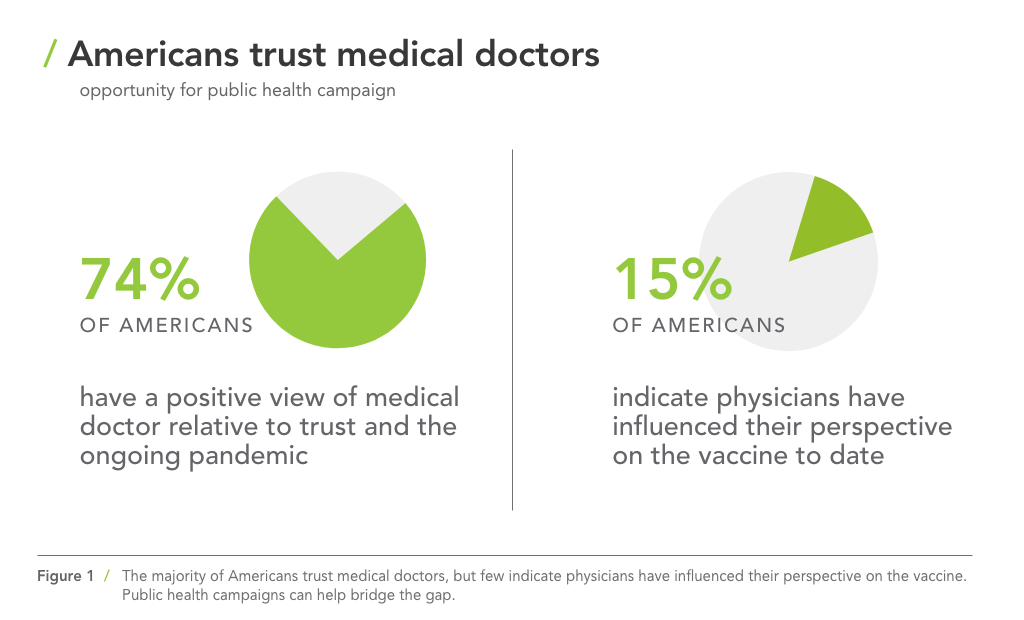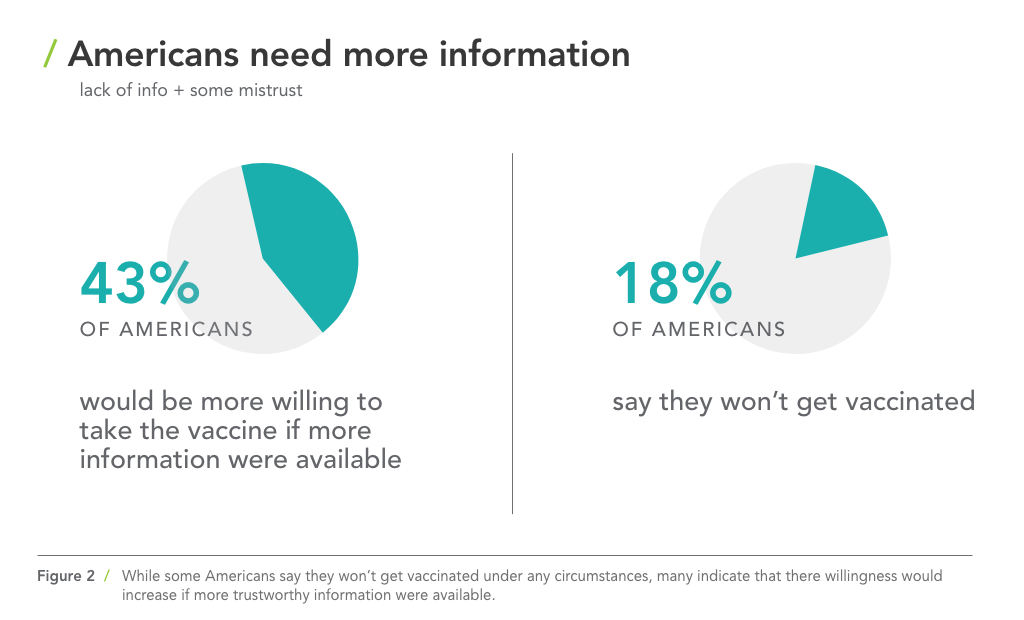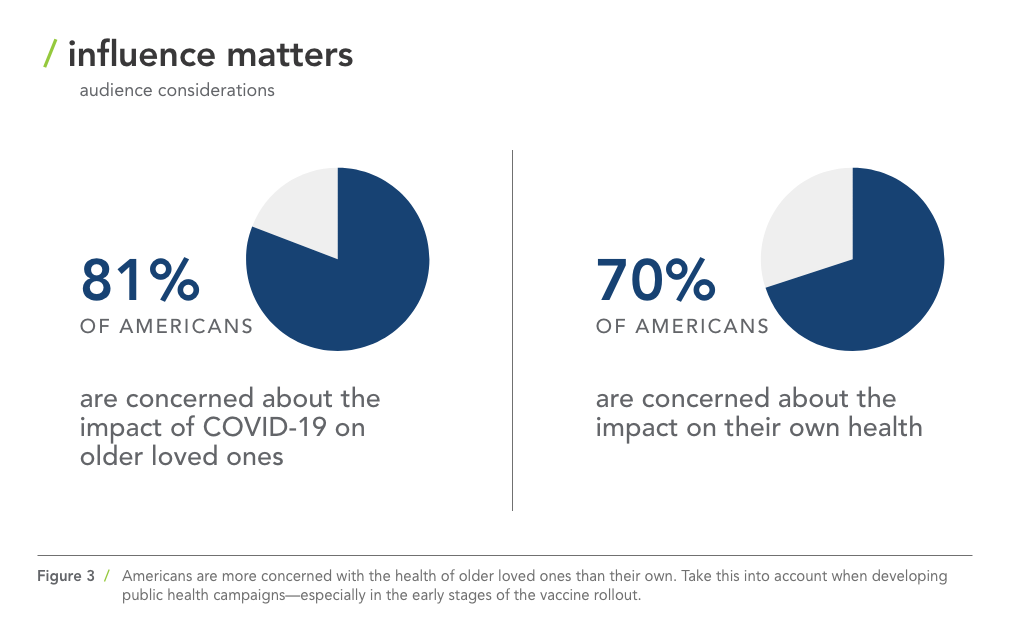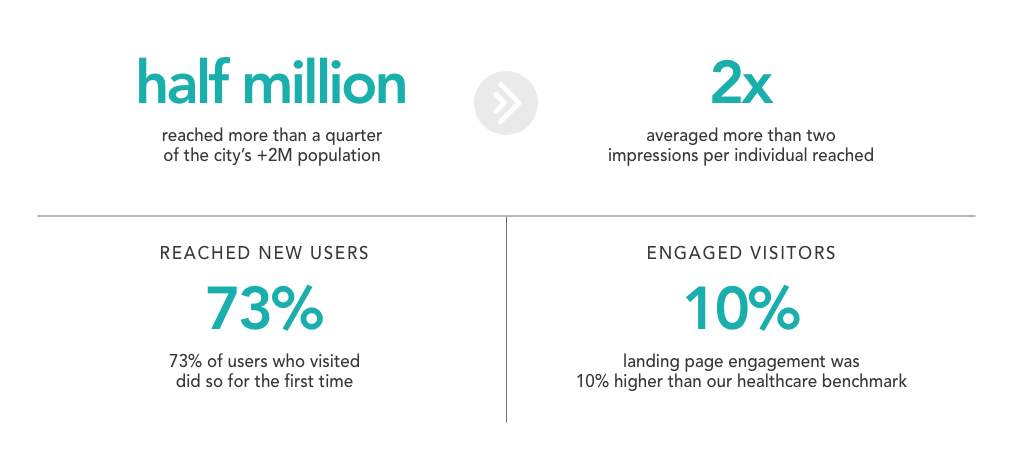Hospitals have long been among the most respected names in their communities, and that’s a reputation that carries significant weight today. 74% of Americans have a positive view of medical doctors—by far the highest score among public figures relative to trust and the ongoing pandemic. The civic commitment that earned that trust has really come to the forefront this past year as we’ve done our best to learn, adapt, and succeed despite stakes that have never been higher.
I’m lucky to work with some incredibly talented and genuine healthcare marketers, representing a few of the country’s best systems. As we enter the next season of the pandemic—vaccination and the hope for normalcy that comes with it—the conversations I have with those healthcare marketers are shifting to confront new challenges: first, addressing misinformation, and second, sharing much-needed information about the coronavirus vaccine. Both challenges require us to educate, first and foremost.
If you’re a healthcare marketer or interested in facilitating successful vaccination campaigns from a digital marketing perspective, especially as supply catches up with and potentially surpasses demand, I’m here to help. In this article, I’ll offer some trends and insights from our work over the past year in hopes it helps you become more informed, confident, and effective in serving your own community.
And one step more, to draw parallels and provide benchmarks from which to measure success, I’ll also share examples from a coronavirus educational campaign we launched with Houston Methodist last summer.
Before I do any of that, know we’re always available for a conversation.
the opportunity for healthcare organizations to educate communities and advance public health
While the vast majority of Americans trust physicians, few indicate physicians have influenced their perspective on the vaccine to date—just 15%. Considering approximately one-in-five adults say they won’t get vaccinated and another 45% are taking a wait-and-see approach, we begin to understand the impact that a hospital-led public health campaign could have. That impact becomes crystal clear when you consider the misinformation that takes hold in the absence of trustworthy evidence.

It’s hard to truly understand how prevalent misinformation is—more than 12M pieces of content were removed from Facebook and Instagram between March and October alone. To address these falsehoods, much of what’s been done in the private sector has been reactive.
Facebook widened their list of banned vaccine claims while earmarking $120M in ad credits for health ministries, United Nations agencies, and other organizations to promote vaccine and health information. Google has been funding news and fact-checking organizations throughout the pandemic, recently committing an additional $3M to bring the total they’ve dedicated to overcoming misinformation to $11M.
Health systems have an important role to play in this conversation, especially in creating a proactive source of information shared by trustworthy individuals.
understanding the questions our communities have about coronavirus vaccination
Despite the misinformation, the percentage of American adults who say they will get the vaccine as soon as it’s available to them is growing. But these individuals have questions, and many say their confidence would increase if they had more details—43% of Americans would be more willing to take the vaccine if more information were available.

So, what information are individuals seeking about the vaccine? According to Google’s published coronavirus search trends, a regularly updated dashboard that summarizes global and regional data, helps us understand the gaps in community knowledge. According to the dashboard, of the top five vaccine-related questions in the United States over the past week (as of February 10, 2021):
- Four ask How. How long do side effects last? How to get a vaccine at ______? How long between doses? How effective is each dose of the vaccine?
- One asks When. When will the _______ vaccine be approved?
Health systems can and should leverage their positions as trusted community voices to answer those How questions. The question for us then, as healthcare marketers, becomes how do we most effectively answer those questions?
developing an effective coronavirus vaccination digital marketing campaign
Despite the complexity of the environment we’re operating within, my biggest recommendation for developing, launching, and optimizing coronavirus vaccination campaigns is to keep it simple. And for simplicity’s sake, I’ve boiled my broader recommendations down to four considerations as you and your teams begin to strategize.
- Define your goal. As marketers, this is often where we start. The difference here is that we don’t have clear ROI or cost-per-patient-acquisition targets for a campaign like this—and you might argue we shouldn’t. So, how should we think about goals? In pursuit of public health, our goal is simple: instill confidence in vaccination and our hospital systems as a provider of the vaccine. Along those lines, we should consider campaigns that reach as much of our local populations as possible. And, ultimately, we’ll know we were successful if we influence behavior. If 63% of Americans say they’ll get vaccinated, help your community out-perform the national average.
- Know your audience. The intended audience is usually the first place I start when translating goals to activities. Relative to our goals of reach and influence, we should understand what motivates individuals to be vaccinated. To that end, this is one campaign where we should think about spheres of influence and not just reaching our target audience. Why? 81% of Americans are concerned about the impact of COVID-19 on older loved ones but just 70% are concerned about the impact on their own health. As you develop creative and targeting strategies, think about messaging to those who care about someone older than themselves and give them the resources to be successful advocates.
- Understand your opportunities. New marketing challenges give you a chance to test, learn, and grow across channels and tactics. This has been the case with almost every hospital system I’ve worked with during the pandemic to launch campaigns. Most commonly, this has meant converting traditional advertising spend to digital strategies—especially those presenting opportunities to grow awareness. Specifically, we’ve worked with hospital systems to diversify their channel mix to include streaming audio and video which are two of the most cost-effective but under-utilized awareness channels we have available.
- Focus your message. Given the combination of misinformation and interest, we need to be diligent in sharing clear, concise, and consistent messages. As a starting point, consider who from your organization is best suited to serve as a spokesperson—even if it’s to simply attribute quotes on a landing page. People are looking for public figures to trust, and it’s likely the answer is a doctor or leader in your system. Beyond that, tailor the specific creative to the questions people are asking. Consider a simple, multi-part message that hits a few key points and provides access to additional detail on a landing page. Animated gifs are an effective way to share this sort of message across awareness channels. Specific points to hit include a belief in the efficacy of the vaccine, an invitation to explore the facts for yourself, and a clear timeline of expectations before, during, and after vaccination.

drawing a parallel from our work with Houston Methodist
To go a step further than high-level considerations, allow me to bring forward an example from a specific campaign where we collaborated with the digital marketing leaders at Houston Methodist. While coronavirus vaccines were still undergoing clinical trials when this campaign ran, it does provide a blueprint for what’s possible with an awareness-first campaign with a goal of influencing behavior.
campaign background
As the Fourth of July holiday weekend approached, new cases were surging in the Houston area. Knowing the community wanted nothing more than to gather for a barbecue and enjoy the company of friends and family, our goal was to reach as many Houstonians as possible, help them understand the risk of gathering, and empower them to make the best decision. If we could stem the rate of transmission even a little bit, that would be a positive return on our investment.
campaign strategy
Our strategy was threefold. First, cast a wide net. Second, share a simple message. Third, focus on education. To cast a wide net, we invested in several channels to reach audiences we didn’t often engage with. On Facebook and Instagram, we shared multi-lingual creative to make sure we were serving the entire community. We leveraged programmatic display plus audio and video pre-roll ads on media platforms where we hadn’t previously engaged.
We clarified our message to the simplest form. The four-part directive we shared was: The safest place to be is home; If you must go out, follow these guidelines; If you have symptoms, seek care; Emergency rooms are safe. To share that message, we created animated ads that both grabbed attention and allowed us to effectively bring the multi-part message forward. From an onsite experience, we prioritized education and utilized a blog post as the destination instead of a more traditional digital advertising landing page.

campaign outcomes
Over the course of a four-day flight, the campaign:

We’re navigating uncharted waters. We’re also collaborating within the healthcare industry in ways I haven’t seen before. I encourage you to seek insight when necessary and share successful approaches when you’re able to. If you’d like to do either with me, please get in touch with us.
